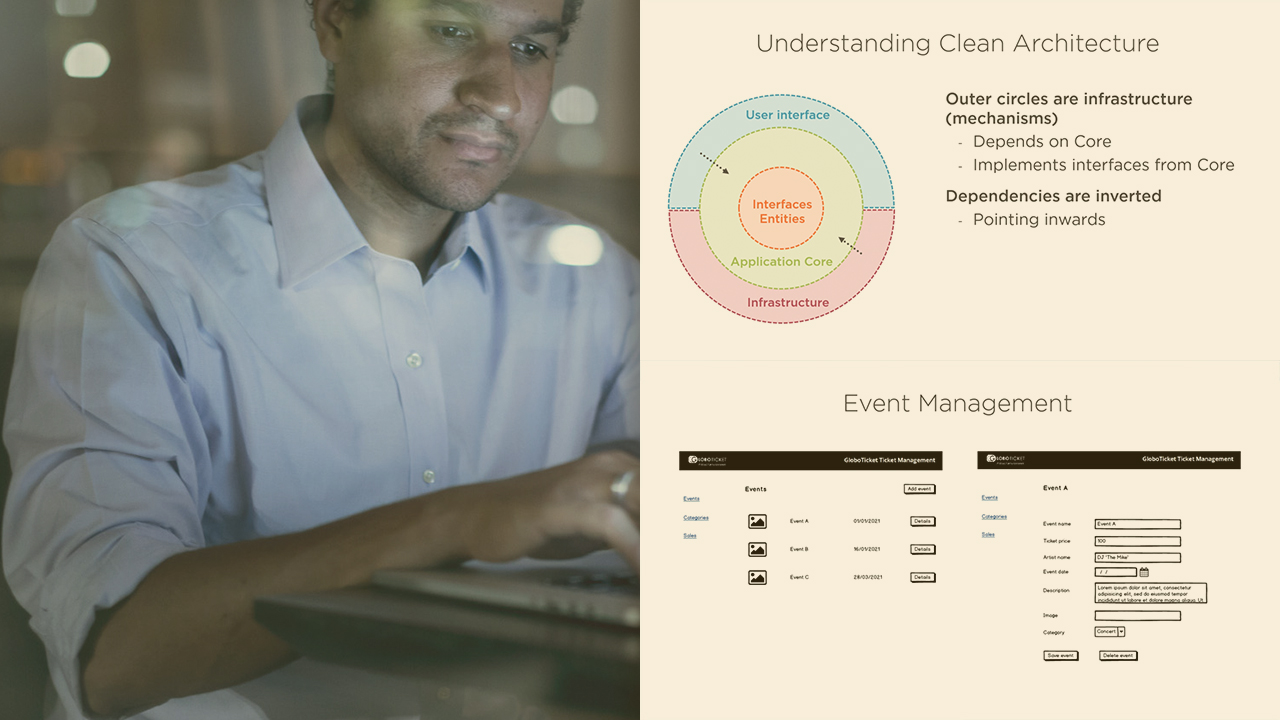- Course
Architecting ASP.NET Core 3 Applications: Best Practices
Creating a testable and maintainable application in .NET Core requires a solid foundation. This course will teach you best practices for creating an architecture for your ASP.NET Core applications.

- Course
Architecting ASP.NET Core 3 Applications: Best Practices
Creating a testable and maintainable application in .NET Core requires a solid foundation. This course will teach you best practices for creating an architecture for your ASP.NET Core applications.
Get started today
Access this course and other top-rated tech content with one of our business plans.
Try this course for free
Access this course and other top-rated tech content with one of our individual plans.
This course is included in the libraries shown below:
- Core Tech
What you'll learn
Setting up an application architecture isn’t a straightforward task. Decisions made early in the process can have a large impact later on, and maintainability and testability play an important role. In this course, Architecting ASP.NET Core Applications: Best Practices, you’ll learn how to create a testable and maintainable architecture for ASP.NET Core. First, you’ll explore foundational architectural principles which help with the creation of maintainable code. Next, you’ll discover how to set up a real-world application architecture with ASP.NET Core. Finally, you’ll learn how to plug in different, common blocks such as logging and authentication. When you’re finished with this course, you’ll have the skills and knowledge of creating a testable and maintainable ASP.NET Core application needed to architect real-world, enterprise .NET Core apps.

